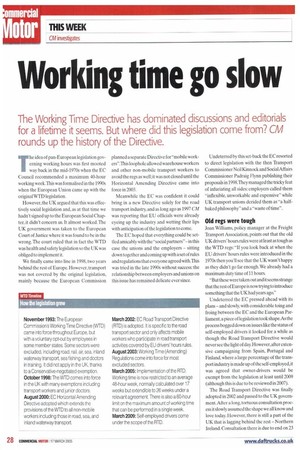November 1993: The European Commission's Working Time Directive (WTD) came
Page 28

If you've noticed an error in this article please click here to report it so we can fix it.
into force throughout Europe, but with a voluntary opt-out by employees in some member states. Some sectors were excluded, including road, rail, air, sea, inland waterway transport, sea fishing and doctors in training. It did not apply in the UK, thanks to a Conservative-negotiated exemption. October 1998: The WTD comes into force in the UK with many exemptions including transport workers and junior doctors. August 2000: EC Horizontal Amending Directive adopted which extends the provisions of the WTD to all non-mobile workers including those in road, sea, and inland waterway transport. March 2002: EC Road Transport Directive (RTD) is adopted. It is specific to the road transport sector and only affects mobile workers who participate in road transport activities covered by EU drivers' hours rules. August 2003: Working Time (Amending) Regulations come into force for most excluded sectors.
March 2005: Implementation of the RTD. Working time is now restricted to an average 48-hour week, normally calculated over 17 weeks but extendible to 26 weeks under a relevant agreement. There is also a 60-hour limit on the maximum amount of working time that can be performed in a single week. March 2009: Self-employed drivers come under the scope of the RTD.










































































































































































































